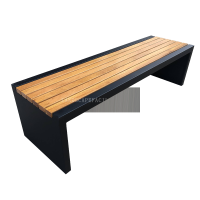Welcome to the website for landscape facilities products and knowledge.
How does the design of the trash can impact the efficiency of waste collection services?
The design of trash cans plays a pivotal role in optimizing waste collection services, impacting everything from operational costs to environmental sustainability. Well-designed bins can streamline the collection process, reduce overflow, and minimize littering, ultimately enhancing urban cleanliness.
For instance, standardized bin sizes and shapes allow for easier mechanized collection, saving time and labor. Smart bins equipped with sensors can notify waste management teams when they are full, preventing unnecessary trips and reducing fuel consumption. Additionally, ergonomic designs with lids and foot pedals improve hygiene and user convenience, encouraging proper waste disposal.
Material choice also matters—durable, weather-resistant materials extend the lifespan of bins, while lightweight options simplify handling. Color-coding and clear labeling further aid in waste segregation, promoting recycling efforts.
In dense urban areas, compact and stackable designs maximize space efficiency, whereas larger, high-capacity bins suit public spaces with heavy foot traffic. Innovations like solar-powered compactors or odor-control mechanisms further elevate functionality.
Ultimately, thoughtful trash can design not only boosts waste collection efficiency but also aligns with broader goals of sustainability and smart city development. By prioritizing user-friendly and scalable solutions, municipalities can create cleaner, more efficient waste management systems.
Related search:

Recommendation
Modern Stainless Steel Begonia Wood Park Chair Outdoor Courtyard Leisure Sun Protection Bench Long Seat